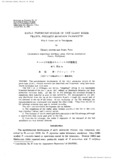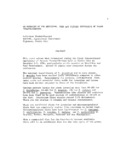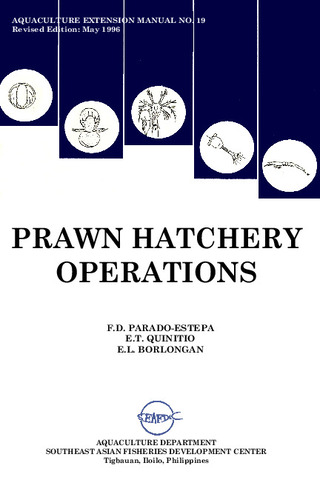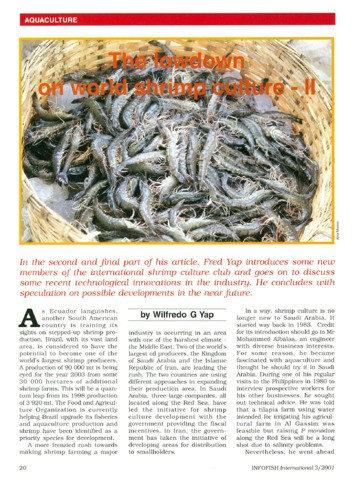Early postmysis stages of the giant tiger prawn, Penaeus monodon Fabricius
Share
Abstract
The morphological development of the early postmysis stages of the giant tiger prawn, Penaeus monodon are described and illustrated using laboratory-reared specimens and wild ones.
The first 3 or 4 substages are termed "megalopa" owing to the incomplete branchial formula of the mouth parts, their pelagic or planktonic behavior and their somewhat narrower body. At the 4th or 5th substage, the branchial formula is completed, their behavior is more or less epibenthic, the chromatophores are densely distributed from the tip of the antennular flagella through the ventral side of the abdomen to the tip of the telson. At the beginning of the 7th substage, the chromatophores are distributed over almost the whole body. Thus from the 4th or 5th substage onwards they may be termed juveniles.
The main characteristics development are as follows : 1) The cempletion of the rostral spine formula appears in the 7th or 8th substage showing 7 dorsal and 3 ventral spines. 2) The endopod of the 1st maxilliped develops again at the 7th substage, although it degenerates with every molt prior to the 7th. 3) From the 1st substage, the distal 3 segments of the endopod of the 2nd maxilliped are bent sharply inwards.
Description
Contribution No. 67 from the Aquaculture Department of SEAFDEC.
Suggested Citation
Motoh, H., & Buri, P. (1980). Early postmysis stages of the giant tiger prawn, Penaeus monodon Fabricius. Researches on Crustacea, (10):13–34.
Subject
Taxonomic term
Collections
- AQD Journal Articles [1249]
Related items
Showing items related by title, author, creator and subject.
-
An overview of the nutrition, feed and feeding techniques of prawn penaeid/shrimps
Piedad-Pascual, Felicitas (Philippine Council for Aquatic and Marine Research and Development, 1989)This paper echoes what transpired during the first International Conference of Penaeid Prawns/Shrimps held in Iloilo City in December 4-7, 1984, particularly on the Nutrition nd Feed Development. Around 25 papers were ... -
Prawn hatchery operations
Parado-Estepa, Fe D.; Quinitio, Emilia T.; Borlongan, Emeterio L. (Aquaculture Department, Southeast Asian Fisheries Development Center, 1996-05)The manual, an updated version of the 1984 SEAFDEC/AQD manual, presents the underlying principles and step-by-step instructions of prawn larval and post-larval rearing. The techniques described are not only applicable to ... -
The lowdown on world shrimp culture - II
Yap, Wilfredo G. (INFOFISH, 2001)This paper introduces some new members of the international shrimp culture club and goes on to discuss some recent technological innovations in the industry, particularly the polyculture of tilapia (mainly Oreochromis ...




